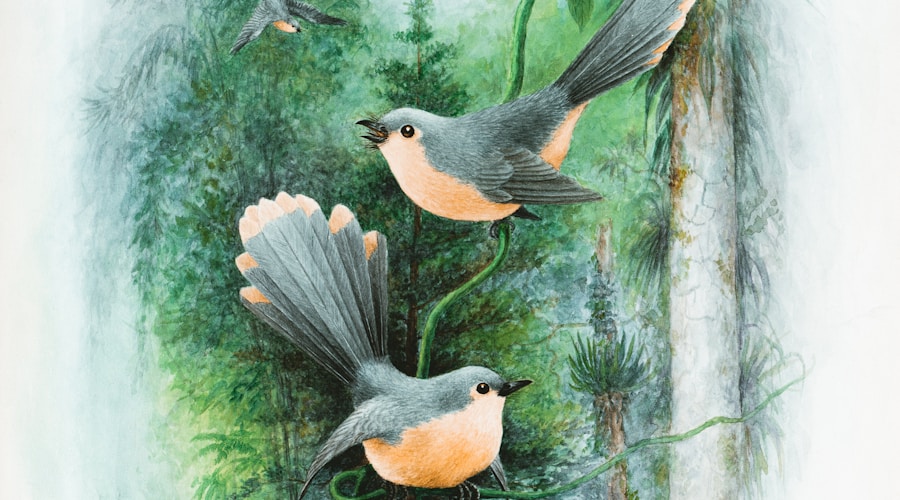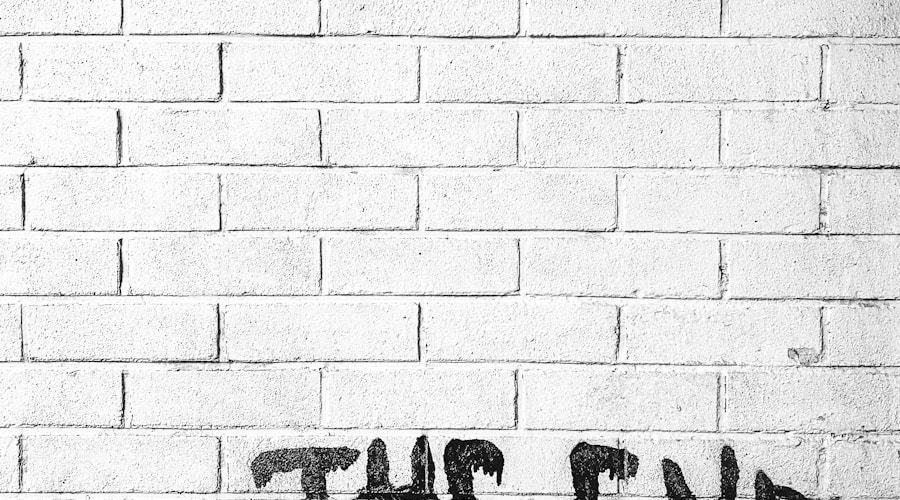Welcome, aspiring artists! Finding your creative voice is an exciting and fulfilling journey. Whether you're a painter, musician, writer, or any other type of artist, your unique voice is what sets you apart from the crowd. It's the essence of who you are and what you have to say to the world through your art.
In this guide, we will explore the process of discovering and honing your creative voice. From understanding your own creativity to finding inspiration and sharing your work, we'll cover everything you need to know to embark on this exhilarating quest.
Remember, finding your creative voice is not about emulating others or seeking approval. It's about embracing your individuality and expressing your authentic self through your art. As the renowned artist Georgia O'Keeffe once said, "I have already settled it for myself so flattery and criticism go down the same drain, and I am quite free."
So, let's dive in and uncover the secrets to finding and nurturing your unique creative voice!
Understanding Creativity and Your Unique Style
When you start on your creative journey, it's important to understand that creativity is not just about producing something new or different. It's about expressing your inner self in a way that is authentic to you. As the artist Kurt Vonnegut once said, "Practicing an art, no matter how well or badly, is a way to make your soul grow, for heaven's sake."
To find your unique style, you must start by understanding yourself. What are your passions, your fears, and your joys? What makes you tick? What moves you deeply? These are the things that will shape your creative voice and make your art truly yours. As the artist Georgia O'Keeffe put it, "I found I could say things with color and shapes that I couldn't say any other way - things I had no words for."
Once you start to understand yourself, you can begin to explore different artistic techniques and forms. We'll delve more deeply into that in the next section. But for now, just remember that your unique style is a reflection of who you are. It's not something you can force or fake - it must come from a place of honesty and truth.
Ultimately, finding your creative voice and unique style is a journey of self-discovery. As the writer Octavia Butler said, "You don't start out writing good stuff. You start out writing crap and thinking it's good stuff, and then gradually you get better at it. That's why I say one of the most valuable traits is persistence."
So, be patient with yourself. Explore different artistic forms, take the time to understand yourself, and remember that your creative voice is a gift that only you can offer to the world.
Exploring Different Forms of Art
When trying to find your creative voice, it's important to explore different forms of art. You might initially think that you're only interested in one type of art, such as painting or photography, but it's essential to keep an open mind and try new things. Iris Apfel, a fashion icon and interior designer, once said, "More is more and less is a bore." This quote perfectly encapsulates the idea that exposing yourself to various art forms can enrich your own creative style.
By experimenting with different forms of art, you can gain new perspectives and techniques that you can incorporate into your own work. Whether it's through sculpture, music, writing, or dance, each art form offers its own distinct set of tools and methods that can inspire and inform your artistic journey.
Susan Sontag, an American writer, director, and political activist, once stated, "Do stuff. Be clenched, curious. Not waiting for inspiration's shove or society's kiss on your forehead. Pay attention. It's all about paying attention. Attention is vitality. It connects you with others. It makes you eager. Stay eager."
So, allow yourself to stay eager and open-minded when it comes to exploring different forms of art. Take a dance class, attend a poetry reading, or visit a museum exhibit. Immerse yourself in diverse creative experiences to unlock new possibilities and ideas.

Learning from Your Art Heroes
When it comes to finding your creative voice, there is no better way to learn than by studying the work of your art heroes. These are the artists who have inspired you, whose work you admire and whose unique style you resonate with. By studying their techniques, methods, and artistic journey, you can gain valuable insights into your own creative process.
Learn from the Masters
As the famous artist Pablo Picasso once said, "Good artists copy, great artists steal." This doesn't mean you should plagiarize or imitate your art heroes, but rather understand and incorporate their techniques and philosophies into your own work. By studying their masterpieces, you can learn about composition, color theory, brushwork, and other technical aspects of art. This can help you develop your own artistic style that is influenced by, but not solely imitating, your art heroes.
Understand Their Journey
Take the time to research and understand the journey of your art heroes. Learn about the challenges they faced, the mistakes they made, and the breakthroughs that led them to success. By understanding their struggles and triumphs, you can gain valuable insights into the creative process. As the author Elizabeth Gilbert once said, "The essential ingredients for creativity remain exactly the same for everybody: courage, enchantment, permission, persistence, trust."
Seek Inspiration from Their Stories
Art heroes can also serve as a great source of inspiration and motivation. By reading about their lives and creative processes, you can gain a deeper understanding of the artistic mindset and the dedication required to pursue a creative career. As the artist Georgia O'Keeffe once said, "I've been absolutely terrified every moment of my life - and I've never let it keep me from doing a single thing I wanted to do."
By learning from your art heroes, you can gain valuable insights, inspiration, and guidance for your own artistic journey. Remember, it's not about replicating their work, but about understanding their process and approach to creativity. As you continue to learn from them, you can develop your own unique style and creative voice that is a reflection of your individuality and artistic journey. Keep exploring, keep learning, and keep growing as an artist.
Finding Inspiration Around You
When it comes to finding your creative voice, one of the best sources of inspiration can be the world around you. Take a walk in nature, visit an art gallery, or simply observe the people and places in your everyday life. As the renowned artist Vincent Van Gogh once said, "I am seeking, I am striving, I am in it with all my heart." By immersing yourself in the beauty and diversity of the world, you can find new ideas and perspectives to infuse into your art.
Moreover, don't underestimate the power of the internet and social media as a source of inspiration. You can follow your favorite artists, join online art communities, and explore different cultures and art styles from around the globe. Take it from contemporary artist, Banksy, who said, "Art should comfort the disturbed and disturb the comfortable". By exposing yourself to a variety of art forms and creators, you can broaden your creative horizons and discover new ways to express yourself.
Lastly, don't forget to look within yourself for inspiration. Your personal experiences, emotions, and dreams can be a rich source of creative fuel. As the poet Rupi Kaur expressed, "You do not just wake up and become the butterfly. Growth is a process." Reflect on your own journey and the things that matter to you, and let them guide you in developing your unique artistic voice.
By finding inspiration in the world around you, both physically and digitally, as well as within yourself, you can tap into an endless well of creativity and fuel your passion for art.

Practicing Regularly and Taking Risks
Consistency is key when it comes to honing your artistic voice. By practicing regularly, you not only improve your skills but also discover new aspects of your creativity that you may not have known existed. As Pablo Picasso said, "Inspiration exists, but it has to find you working."
Taking risks is an essential part of finding your creative voice. This might mean trying out new techniques or experimenting with different mediums. It's important to push yourself out of your comfort zone and embrace the unknown. As author Brene Brown puts it, "Creativity is the way I share my soul with the world."
Don't be afraid to make mistakes or produce work that you're not entirely happy with. It's all part of the learning process. As you continue to practice and take risks, you'll start to see patterns emerging in your work that reflect your unique style and voice. It's through this process of trial and error that you truly find yourself as an artist.
Remember, the more you practice, the more confident you'll become in your abilities. You'll start to trust your instincts and develop a deeper connection with your art. This will ultimately shine through in your work, making it more authentic and true to who you are.
So, keep practicing, keep experimenting, and most importantly, keep taking those risks. It's through these actions that you'll uncover your creative voice and establish yourself as a unique artist in your own right. As author and artist Austin Kleon said, "The only way to find your voice is to use it."
Sharing Your Work and Gathering Feedback
Sharing your own art with the world can be a scary but rewarding experience. It's a crucial step towards developing your creative voice and growing as an artist. When you put your work out there, you open yourself up to valuable feedback and opportunities for improvement.
Seeking Constructive Criticism
When sharing your art, it's important to be open to feedback. Constructive criticism can help you see your work from a different perspective and identify areas for improvement. As the famous artist Pablo Picasso once said, "The purpose of art is washing the dust of daily life off our souls." Constructive criticism can help you refine your art and elevate it to new heights.
Finding Like-Minded Communities
Look for communities of fellow artists who can provide you with honest feedback and support. Whether it's a local art group, online forums, or social media platforms, surrounding yourself with like-minded individuals can be incredibly valuable. As author Brene Brown once said, "The only unique contribution that we will ever make in this world will be born of our creativity." Embracing the creativity of others and sharing your own can help you grow as an artist.
Learning from Different Perspectives
When gathering feedback, consider the perspectives of diverse audiences. Their insights can offer you new ways to think about your art. As novelist James Baldwin once said, "The artistic image is not intended to represent the thing itself, but, rather, the reality of the force the thing contains." Embracing different viewpoints can help you tap into the true force of your art.
Remember, feedback is crucial for your growth as an artist. Embrace both positive and negative feedback as opportunities to learn and improve. It's all part of the journey toward finding and refining your creative voice. Keep sharing your work, and keep growing as an artist.

Stay True to Yourself and Keep Growing
It's essential to stay true to yourself and continue growing as an artist. Remember, your creative voice is unique, and it's what sets you apart from others. As Maya Angelou said, “You can’t use up creativity. The more you use, the more you have.”
Keep experimenting with different techniques and styles, but always stay true to your own vision. It's important to stay authentic to your art, as Vincent Van Gogh once said, “I am seeking. I am striving. I am in it with all my heart.”
Don't be afraid to push boundaries and take your art in new directions. As you grow and evolve, your creative voice will too. Embrace the process and enjoy the journey of self-discovery through your art.
Remember that growth takes time, so be patient with yourself. As Bob Ross famously said, “We don't make mistakes, just happy little accidents.” Every mistake is an opportunity to learn and grow as an artist.
Your creative voice is a powerful tool that can make your art truly remarkable. By staying true to yourself and continuing to grow, you can nurture and develop your unique style. Remember to always be authentic, embrace new challenges, and enjoy the journey of self-expression through your art.
Conclusion
Congratulations on your journey to finding your creative voice! Remember, this is not a destination, but a continuous evolution. As Pablo Picasso said, "Every child is an artist. The problem is how to remain an artist once he grows up." So, keep nurturing your creativity, stay true to yourself, and embrace the growth and changes that come with it. Don't be afraid to take risks and try new things, and always keep an open mind.
In the words of Maya Angelou, "You can't use up creativity. The more you use, the more you have." So, keep practicing, keep exploring, and keep expressing yourself. And don't forget to share your work with others and gather feedback to help you grow even more.
Finding your creative voice is an incredibly rewarding and personal journey. It's about understanding who you are, what moves you, and how you want to express that to the world. It's about staying true to yourself while also pushing yourself to grow and evolve. As you continue on this path, remember to stay inspired, keep learning, and most importantly, keep creating. Your voice matters, and the world is waiting to hear it.

2Susan Sontag, "At the Same Time: Essays and Speeches" (2007)
3Elizabeth Gilbert, Big Magic: Creative Living Beyond Fear (2015)
4Georgia O'Keeffe, Georgia O'Keeffe: Art and Letters (1989)
5Irving Stone, "Lust for Life" (1934)
6Tristan Manco, "Stencil Graffiti" (2002)
7Rupi Kaur, "Milk and Honey" (2014)
8Twyla Tharp, The Creative Habit: Learn It and Use It for Life (2003)
9Seth Godin, Linchpin: Are You Indispensable? (2010)